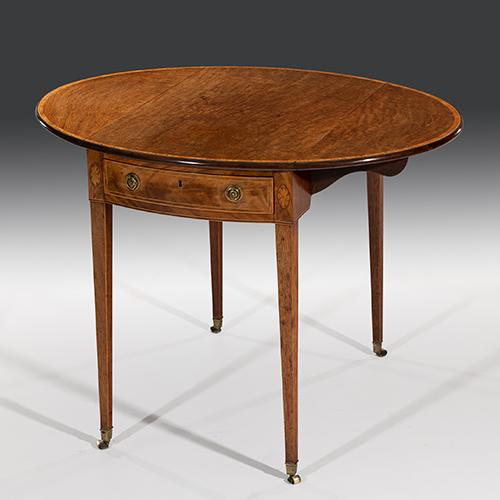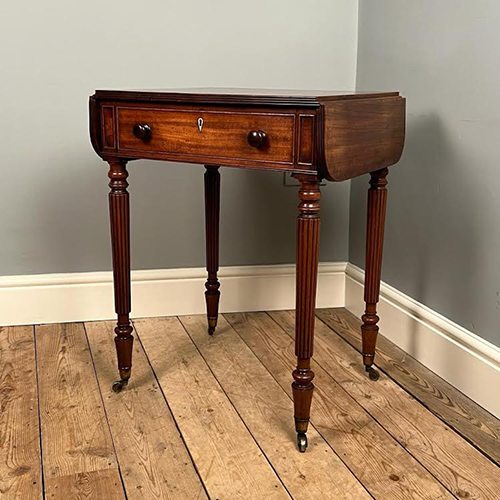

One of the most useful and versatile items of Georgian furniture, the Pembroke table is thought to have been named after its likely inventor, Henry Herbert, 9th Earl of Pembroke (1693–1751).
An immensely influential figure in the early Hanoverian period, Pembroke was a close confidante of George II, serving as Gentleman and later First Lord of the Bedchamber from 1714-1735.
Henry studied classical architecture at Christ Church, Oxford and designed the Column of Victory at Blenheim Palace. He also collaborated with architect Roger Morris on the design of Marble Hill House, Twickenham, and the White Lodge in Richmond.
Whether named in his honour or conceived by his hand, the name ‘Pembroke table’ carries an impressive pedigree.
An alternative theory is offered by the great furniture designer Thomas Sheraton, who in his Cabinet Directory of 1803 describes a Pembroke table as, “a kind of breakfast table, from the name of the lady who first gave orders for one of them, and who probably gave the first idea of such a table to the workmen.”
As a rule, the classic Pembroke table should have three distinguishing features. The first is a set of drop-leaf flaps to either side, mounted on hinged brackets, which allow the table to be extended in size depending upon its intended use.
 The second is a pair of drawers at each end for discreet and convenient storage, and the third feature is a set of castors at the end of each leg, allowing for quick and easy relocation. The four legs are often reinforced by x-frame stretchers to provide additional stability.
The second is a pair of drawers at each end for discreet and convenient storage, and the third feature is a set of castors at the end of each leg, allowing for quick and easy relocation. The four legs are often reinforced by x-frame stretchers to provide additional stability.
Pembroke tables had become so fashionable by the early 19th century that Jane Austen makes mention of one in her abandoned novel, The Watsons, writing, “Miss Watson seated at the best Pembroke table, with the best tea-things before her'.
Ideal as a bedside breakfast table, a surface for serving tea, a small dining table, lamp table or card table, the Pembroke table’s remarkable versatility explains its important role in Georgian households and its enduring popularity today.
Click here to view examples of Pembroke tables currently available from BADA members.

